The Police hang at The Edge in 1979 with Q107′s Gary Slaight (left) and Brian Master (third from left). Photo courtesy of Gary Topp.
Article originally published November 2, 2012 by The Grid online (thegridto.com).
After punk exploded in the late ’70s, this infamous Gerrard Street new-wave mecca kept the fire burning into the ’80s—even if its many famous performers were in danger of getting doused by the overflowing upstairs toilets leaking onto the stage.
BY: DENISE BENSON
Club: The Edge, 70 Gerrard St. E.
Years in operation: 1979-1981
History: On the northeast corner of Gerrard and Church sits a modest three-floor building that has had—and housed—many lives. It is said to have once been the residence of Egerton (pronounced “Edge-erton”) Ryerson, a prominent Canadian educator who, in 1852, founded the Toronto Normal School at what is now Bond and Gould streets.
Ryerson University is named after him, as was Egerton’s Restaurant and Tavern, a student hangout and folk-music club that opened at 70 Gerrard St. E. in the early 1970s. Licensed as a “listening room” and required to sell food, Egerton’s was open seven days a week, sold cheap beer, and booked live performers like Stan Rogers.
“We lived in the shadow of The Riverboat [in Yorkville] and bigger clubs that had bigger stages and dance floors, like the El Mocambo, Midwich Cuckoo Tavern, and Jarvis House,” recalls Derek Andrews, a veteran Toronto live-music programmer who got his start in the industry as a dishwasher at Egerton’s in January 1974.
Andrews would continue at the location for almost eight years, working his way up to busboy, waiter, and general manager. He shares that Egerton’s had been owned by Warren Beamish, PC candidate for the Rosedale riding in 1974’s federal election, before it was acquired by Bernie Kamin and Harvey Hudes, partners in Mosport Park, among other projects. The pair brought in a young Ron Chapman as co-owner and managing operator.
Chapman and Andrews—who together would run the Nite Life management company which represented artists including songwriter Eddie “Hit Me With Your Best Shot” Schwartz, Paul Quarrington, and Ellen McIlwaine—would go on to book the likes of legendary funk drummer Bernard Purdie during Egerton’s later period.
But Chapman also had an eye on Toronto’s emerging underground. Late in 1978, he invited prescient concert promoters Gary Topp and Gary Cormier, together known as The Garys, to come book live music at Egerton’s.
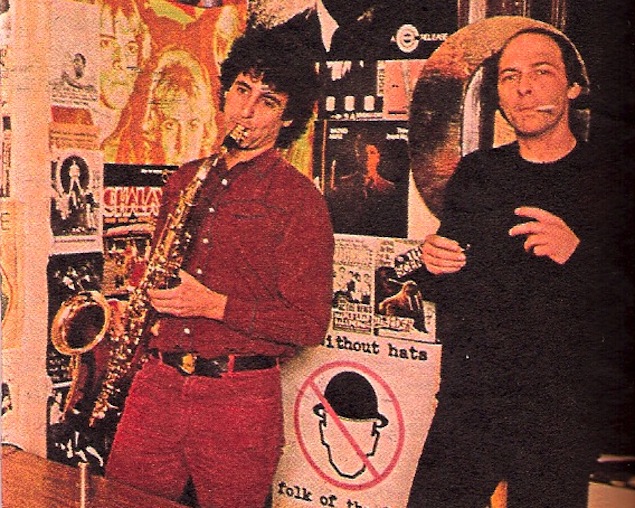
Gary Topp (left) and Gary Cormier, as they appeared in the Toronto Star, circa 1980. Photo courtesy of Gary Topp.
The Garys were, by then, known for presenting live shows by eccentric singer-songwriters and cutting-edge jazz, blues, punk, and new-wave artists. Topp had programmed films—and occasional live bands, including the debut performances by both Rough Trade and Nash the Slash—at east-end movie theatre The Roxy. In 1976, Topp launched the New Yorker Theatre on Yonge (now the Panasonic), where artist David Andoff would introduce him to carpenter and fellow music head Cormier.
Partly influenced by screening Blank Generation, Amos Poe’s movie about early New York punk, Topp had decided he needed to build a stage at The New Yorker and bring in bands. Cormier and he were in sync, and joined forces to present The Ramones in September 1976, followed in ’77 by fellow New Yorkers the Dead Boys, U.K. punks The Vibrators, and locals including The Viletones and The Poles.
After rent was raised at The New Yorker, The Garys relocated to The Horseshoe Tavern where they built a stage, brought in sound and lighting, and booked bands beginning in March 1978.
“Our statement was that we were going to be Toronto’s first concert club,” says Topp.
They brought in a wide range of artists—from Sun Ra, Cecil Taylor and Etta James to Talking Heads, Johnny Thunders and a then unknown trio called The Police—before The Horseshoe’s owners opted to revert to a country format that December.
Enter Ron Chapman.
“Ron started coming down to The Horseshoe, and was there the night we did The Police,” recalls Cormier. “When everything kind of collapsed at The Horseshoe—when they said, ‘Take your fucking punk music and get out of here’—Ron said, ‘Come to Egerton’s.’
“Everybody thought it was a horrible idea because it was a little folk room. Although, if the truth be known, most of the shows that we did at The Horseshoe only drew 100 to 200 people. So I said, ‘Yeah, we’ll go to Egerton’s, and we’ll call it The Edge, and that’s that.’”
The Garys worked with Chapman and Andrews to quickly transform the Egerton’s space. It was painted black, the stage was moved, raised, and expanded, with sound and lighting upgrades also helping to create a proper concert space. The staircase that divided the long main room into two halves remained, as did a fireplace. Some walls were removed to increase capacity and (slightly) improve sightlines, but the venue’s wooden chairs and tables stayed put as per its dining licence. Food was served from 7:30 a.m. to 11 p.m. daily. The building’s second floor featured an office and washrooms with notoriously leaky toilets.
“The Edge didn’t really ‘open’ so much as enjoy a name change, with rebranding and a music-policy change,” explains Andrews. “The menu and staff were in fact the same initially. The reach was to catch the wave, so to speak, of young audiences coming out for live music.”
The venue’s official start date was December 31, 1978. Local favourites Martha and the Muffins brought in the New Year.
Why it was important: “The two-and-a-half year life of The Edge was like a high speed train running through Toronto music culture,” says Andrews. “The club was an exploding black box inside a colonial historic building. Sometimes the vibe was chilled by free jazz, folk legends, or blues artists, but the dominant sound was a mix of crunchy post-punk and British new wave.”
By 1979, Toronto’s music and art scenes were exploding. The city had style, originality, and attitude to spare. There was as much camaraderie as competition among bands in the downtown scene, with people pushing one another to go further.
As a 200-capacity live music venue that was open every day and night of the week, The Edge played a unique role. There were not many venues in town devoted to emerging, often esoteric live bands—though punks had previously infiltrated venues like Turning Point, Crash ’n’ Burn, and the infamous Larry’s Hideaway on Carlton Street—and certainly not on such a regular basis.
“There were a lot of little places having bands, but I don’t think there were any venues like The Edge, which was bringing in major international artists alongside the locals,” says Gary Topp. “It was a concert hall in the guise of a club, and it became a hangout.
“Because it was also a restaurant, with food during the day, you could go in and watch as people soundchecked. It was also all-ages, because it was a restaurant, and we put a PA out on the patio so people could still hear sold-out shows.”
“The Edge really did feel like a new beginning,” says veteran musician and photographer Don Pyle, a regular at the club. “Punk had happened, and the venues had been appropriate for that. Now, things were becoming artier and more experimental. This seated and more comfortable venue, with food even, reflected some kind of maturing in the ‘scene.’”
At a time when there weren’t large booking agencies, like-minded concert promoters across the continent formed bonds to bring over the Brits and others.
“The Garys brought in the who’s who of emerging acts of the day—be it locals, first plays from the U.K., and of course a lot of acts from New York City, Ohio, and beyond,” says Ivar Hamilton, another Edge regular who also held sway as the Import Music Director at CFNY 102.1 FM during its most adventurous years. “They were ahead of the curve on nearly every level, and that made The Edge such an iconic venue for the short time it was in existence. They didn’t always do punk and new wave; there was a great mix of genres of music, plus poetry and film. You had to be there!”
“The Edge was our little clubhouse,” says Gary Cormier. “All we wanted to do was see these bands. There were a few things behind our thinking. It was like: ‘Take me to a place I haven’t been,’ ‘Show me something I haven’t seen,’ and ‘Let me hear something I haven’t heard before.’ Underlying that whole theme was—to the rest of the industry—something akin to ‘Come on. Is that the best you guys can do? Is that all you’ve got?’ It wasn’t necessarily a sense of one-upmanship or whatever, but clearly we were on a different path than everyone else. There was nothing that we were afraid to do, and we were not afraid to fail. We lost so much money sometimes, but we weren’t in it for the money.”
Adds Topp, “The scene was so small back then that it was actually like a club—like the Mickey Mouse Club. We were all punkateers.”
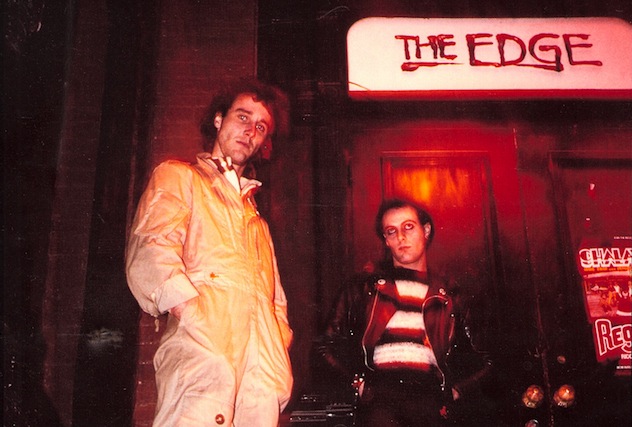
Wayne Brown of The Fits (right) and an Edge staff member stand outside the club in a “punk fashion” magazine spread. Photo courtesy of Gary Topp.
“It was smallish, but really electrifying,” says Steven Leckie, best known as lead singer of seminal Toronto punk band The Viletones, who performed frequently at the club. “Looking back, I think The Edge was at an absolute peak of things. I lived just up the road, at Church and Isabella, and went almost every single night. Bands that now have big-name recognition would play three or four nights out of every seven.”
“The Edge was cooler than shit,” Carole Pope tells me. “All my close friends went there. It was like being at a club in New York or London.”
As lead singer of hugely influential Toronto band Rough Trade, Pope performed all over the city and toured internationally, but The Edge remains especially close to her heart.
“I saw so many great bands there: Ultravox, The Slits, John Sex, Nico, B-52s. The Slits were all about shocking the audience. One of the chicks said, ‘I have my blood,’ sharing with us that she was on her period. Nico was all-mysterious, wrapped in her Velvet Underground aura. Ultravox was amazing; I loved everything they did.”
“Within the first two to three months of The Edge, we did both XTC, and Ultravox with John Foxx, which was a completely different animal than without him, and they were just incredible shows,” Cormier recalls. “Every minute that those bands were on stage in that room were captivating, with the entire audience in sync. Those nights, you could go home without a nickel in your pocket and you thought you had the world by the tail.”
Topp is equally enthusiastic. “Everybody we booked was special to at least one, if not both of us. XTC played with Barry Andrews on keyboards, before he left. Sun Ra—the real Sun Ra, when he was alive—played, with half the band in the audience because there was no room on the stage. Nico played twice. One of the times, she was wandering around in the afternoon in the attic of the house and encountered a ghost. There were lots of punky shows—999, The Viletones. Wayne/Jayne County recorded Rock ‘N’ Roll Resurrection on New Year’s Eve in 1979. But of all the international artists, John Otway played the most, like five or six times.”
“The Edge was my favourite venue [in North America], followed by Max’s Kansas City in New York,” says eccentric British singer-songwriter Otway, billed as “rock and roll’s greatest failure” in new documentary Otway: The Movie. “The Edge was the gig in North America that felt very much like a U.K. venue. From the very first show there, we went down a storm. It was brilliant. The audiences, as I remember, got bigger and bigger each time we came over. It probably cost me a fortune because I believed if we could do this all over the continent we would crack America in no time.”
The Garys were notorious for booking oddball acts with cult status. Another was U.K. rockabilly outfit Crazy Cavan ‘n’ The Rhythm Rockers, the band responsible for altering Steven Leckie’s life and look.
“They were this working-class rockabilly band from Wales that managed to get around 50 teddy boys and girls to come with them on this North American jaunt,” says Leckie. “The next day, I changed my hair, I changed everything, and got really deep into U.K. rockabilly, which was way more glamorous than the American stuff.”
Surprisingly congenial for a guy once nicknamed Nazi Dog who earned a rep for cutting himself on stage and throwing himself into audiences, Leckie recalls that The Viletones in fact debuted their own stylistic and musical take on rockabilly at The Edge.
“It went over like Bob Dylan going electric,” he chuckles as we chat by phone. “It really went badly, but it gave the band a lot of longevity. Plus, it looked better and it seemed more primal. It was the sheer ego of it. I see rock ‘n’ roll as a glamour artform. For me, The Edge was really high glamour.”
Especially glamorous, it seems, were the club’s second-floor bathrooms, mentioned by almost everyone I spoke with.
“The bathrooms were above the stage, and were often fucked up,” says Topp. “Sometimes, the toilets would flood and the water would pour down on the stage while bands were playing.
“The best time of all was one night while Jonathan Richman played there. It was a Sunday, he was solo, and the water was pouring down at the front of the stage. He had the luxury of just moving back, and I was doing lights, as I usually did. That night, with the water falling in front of Jonathan, it was kind of like the coloured lights on Niagara Falls at night.”
That said, The Garys did work hard to create a sense of glamour at the street level. Posters blanketed downtown, ads were placed, and they had good connections with a handful of Toronto music journalists. While CFNY had the most obvious and significant programming overlap with the club’s bookings, particularly during the Ivar Hamilton and David Marsden years, both CHUM-FM and Q-107 featured some adventurous programming back then as well. Q-107 host Bob Mackowycz Sr. was frequently at The Edge and played many of its visiting bands on his popular 6 O’Clock Rock Report. Gary Topp even hosted a weekly show on the Q dubbed The Edge of Morning, Sundays from 1-2 a.m., in 1980.
The Garys saw the club as a springboard for emergent local acts.
“We nurtured a lot of local groups who got signed from playing regularly at The Edge and from being promoted the same ways we would promote The Police or whoever,” says Topp.
He namechecks more than a dozen Toronto acts of the time, including The Mods, Drastic Measures, The Sharks, The Curse, Spoons, Battered Wives, The Demics, The Dishes, Johnny and the G-Rays, Blue Peter, and The B-Girls.
“The B-Girls should have been The Go-Gos or The Bangles,” says Topp. “They deserved it, but they lived in small-town Ontario—that is, Toronto—so people didn’t believe in them.”
Martha and the Muffins certainly benefitted, both from frequent bookings and by snagging Arthur Fogel as tour manager. Fogel was a young musician hired by Derek Andrews; he was first a bartender and then made night manager. He worked at The Edge for about two years, before leaving to work with the Muffins and then at Concert Productions International (CPI).
“The Edge somehow [caught] the spirit of the time,” says Fogel. “It was cutting edge yet down to earth. It was kind of like seeing great artists in your living room.”
“It was an exciting time, and The Edge was one of the best venues Rough Trade ever played at,” says Pope. “It was hip, and everyone wanted to play there. The audience was really into it and The Garys were great to work with. They were music aficionados who really got it. So many bands launched their careers there.”
“Rough Trade was one of my favourite regular bands at the club,” Andrews says. “They filled the place, and were a perfect fit for our aesthetic. I fondly remember my parents joining me on a birthday night when I had to work, and Rough Trade was playing. The band must have already had their ‘High School Confidential’ hit because my folks were impressed that they were at the club. When Carole Pope grabbed her crotch, my dad covered mom’s eyes. They liked the show, though!”
That was part of The Edge’s charm: Audiences were a mix of in-the-know Queen Street types, queer art-school kids, and people who came from all over Southern Ontario to see bands that often played nowhere else in the region.
Who else played/worked there: “Considering the level of talent that appeared consistently, The Edge was a special place to be,” says Ivar Hamilton, who’s worked in marketing and promotion at Universal Music for the past 24 years. He remembers many favourites.
“The first Canadian show by Magazine was simply fantastic! I saw Ultravox in the John Foxx era, numerous Pere Ubu appearances, The Police’s second Canadian show, Penetration, Shrapnel, many appearances by Chris Spedding and Jonathan Richman. 999 tore the roof off the place, Nash the Slash almost had a second home there, and I remember a very early Martha and the Muffins playing, too.”
Don Pyle—who played The Edge as part of punk band Crash Kills Five before going on to form Shadowy Men on a Shadowy Planet with two of the three other band members—also caught dozens and dozens of shows. He photographed many of them, with the results included in his great 2011 book Trouble In the Camera Club.
“It was easy to go four nights a week,” says Pyle. “Bands I recall most vividly are The Dils, partly because I had helped book the shows and was a huge fan. XTC was really memorable because they were so great at that time, and it was still somewhat rare to see bands that had come from punk scenes with keyboards. Barry Andrews was so captivating to watch. Colin Newman [of Wire] played one of his first solo shows there, with light only coming from a film projected onto his band. Psychedelic Furs performed, without an album out in North America, and were totally amazing at that time. The Cramps played a few times, and were always incredible.”
The list of artists that performed at The Edge during its less-than-three-years is simply mind-blowing. Others who should be mentioned include Mink DeVille, John Cale, Alex Chilton, Squeeze, John Hammond, Joan Jett, Nona Hendryx, Echo and the Bunnymen, Simple Minds, The Teardrop Explodes, William Burroughs, X, and The Knack. (“They had all of these sponsored Marshall amps and they couldn’t get them to work—ridiculous,” chuckles Topp.) Joy Division was scheduled to perform May 25, 1980, but cancelled their North American tour when singer Ian Curtis committed suicide one week earlier.
A band that practically personified The Edge was Dick Duck & the Dorks. Singer Paul Ekness, like many of the band’s merry punksters, worked at the club and added to its family feel. John Otway would later bring them over to tour the U.K. and Scandinavia with him.
“There was a core of regulars that was relatively small, so everyone who was there often knew each other,” recalls Pyle. “Some people had been with The Garys since The New Yorker, like filmmaker Colin Brunton, who worked the door and box office, and a bouncer named Tank. The bands and the staff together created the atmosphere that was so different from most venues.“
Cook Catherine Lalande would cater The Garys’ shows through the years while bartender Chris Pegg went on to do lighting with them before forming his own company.
Derek Andrews also credits Edge staff including bookkeeper Jayne Martin, now a production manager; waitress Julia Sasso, now a leading choreographer; and Jordy Sharp, an ace busboy who would go on to buy The Brunswick House and hire Andrews to book Albert’s Hall.
“Jordy’s dad is Issy Sharp, of Four Seasons Hotels,” says Andrews. “Jordy was worth $600 million when he was clearing tables.”
“A good bunch of people worked hard, and had fun while making the club a great place to perform or to see a show,” summarizes Fogel, now CEO of Global Touring at Live Nation Entertainment. He’s organized tours for the likes of Bowie, The Police, Madonna, U2, and Lady Gaga. “The Edge holds its place as a great moment in time in the rich tradition of Toronto live music clubs.”
“The Edge years added important ingredients to the Toronto music menu,” adds Andrews. “It forever enhanced the credibility of Toronto as a music centre, and inspired thousands to believe that contemporary music culture deserved respect and attention. Gary Cormier and Gary Topp made that club a beacon, and deserve credit for the music alchemy it enjoyed.”
“It’s like I always say: When you break all the rules, everything is wrong, but it’s right,” says Cormier.
What happened to it: Though nights at The Edge were generally busy, the momentum was hard to maintain. Daytime restaurant sales had also slowed, and related expenses were high.
“The morning and lunch business actually suffered as a result of the brisk night business,” says Andrews, who worked in the building until a few weeks after The Edge closed. “It was harder to create a pleasant atmosphere after 200 sweaty, smoking youth pounded the place.”
Andrews reveals that staff paycheques had begun to bounce in the final months of The Edge, and the club’s owners closed it abruptly.
“The building was bought by the Catholic Church, and turned into a home for troubled youth,” says Andrews, who went on to also program at The Horseshoe and Harbourfront Centre, and is now Music Curator and Artist Manager for Luminato. “We all thought that was ironic, given the previous use: troubled youth and all.”
The Edge closed on June 6, 1981 as British singer-songwriter Kevin Coyne played the last of a three-night stint, his only Canadian shows ever. The Garys had tried to book Coyne for years and, in fact, had taken a chance on The Police because guitarist Andy Summers also played with Coyne.
By that point, The Garys had already begun booking larger concert venues like The Music Hall, Palais Royale, and The Concert Hall. They continued to set the pace throughout the 1980s, also bringing bands to large clubs like The Diamond and RPM.
Cormier now teaches concert promotion at George Brown College, and programs shows for the Toronto Jazz Festival and elsewhere.
Topp also remains active—and selective—as a concert promoter. On November 12, he presents Lydia Lunch—who once performed at The Edge as part of no-wave group 8-Eyed Spy—at Wrongbar, alongside The Dave Howard Singers and Yamantaka // Sonic Titan.
Ron Chapman went on to manage bands, produce films, and now runs marketing and communications company Brandworks.
Steven Leckie is at work on three books, two of them “deep memoirs,” and the other a poetry collection he expects to be available by year’s end.
70 Gerrard St. E. is now the location of Mary’s Home Emergency Shelter for women.
Thank you to Arthur Fogel, Carole Pope, David Barnard, Derek Andrews, Don Pyle, Gary Cormier, Gary Topp, Ivar Hamilton, John Otway, and Steven Leckie.

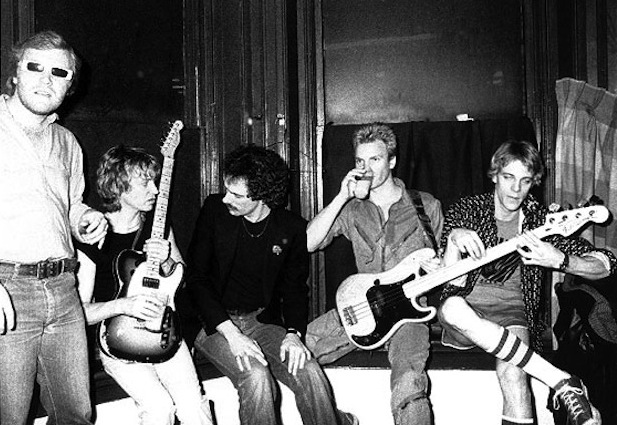
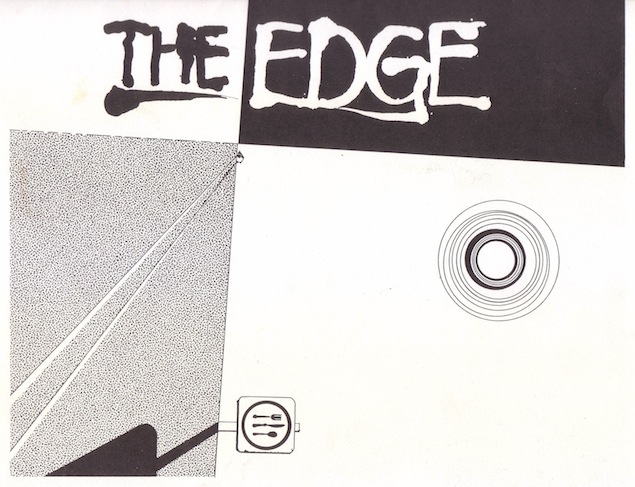
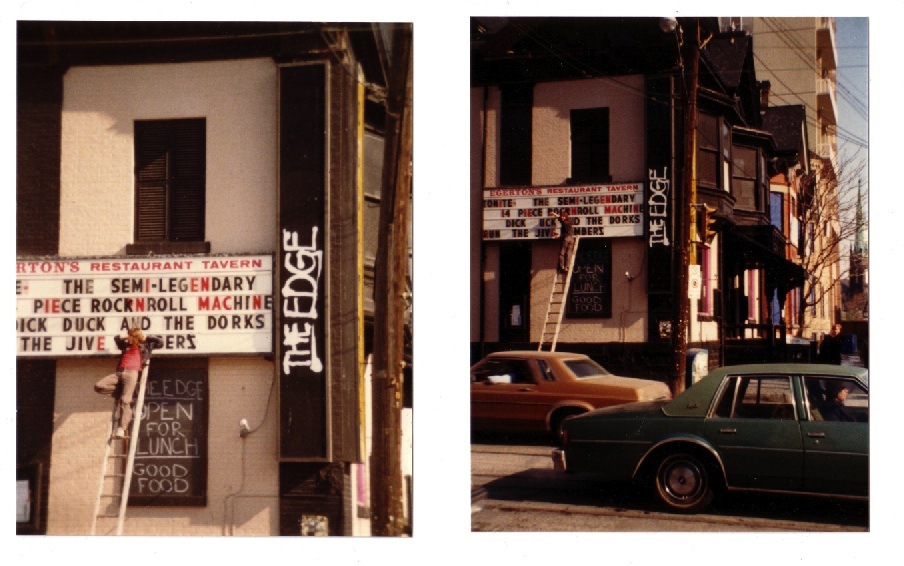


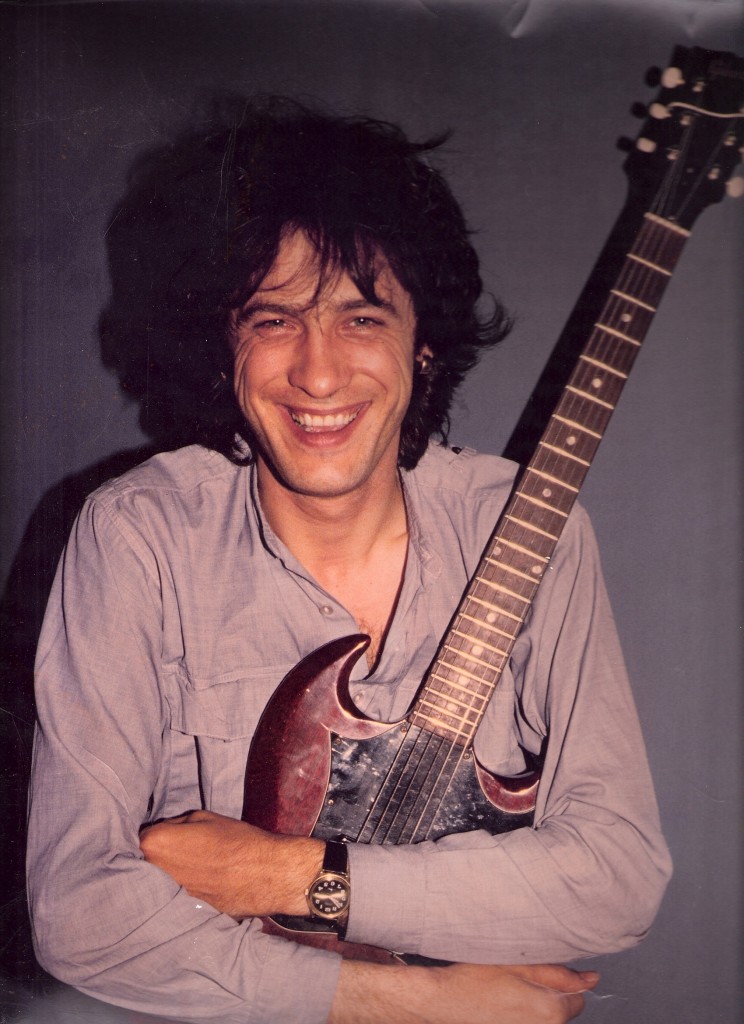
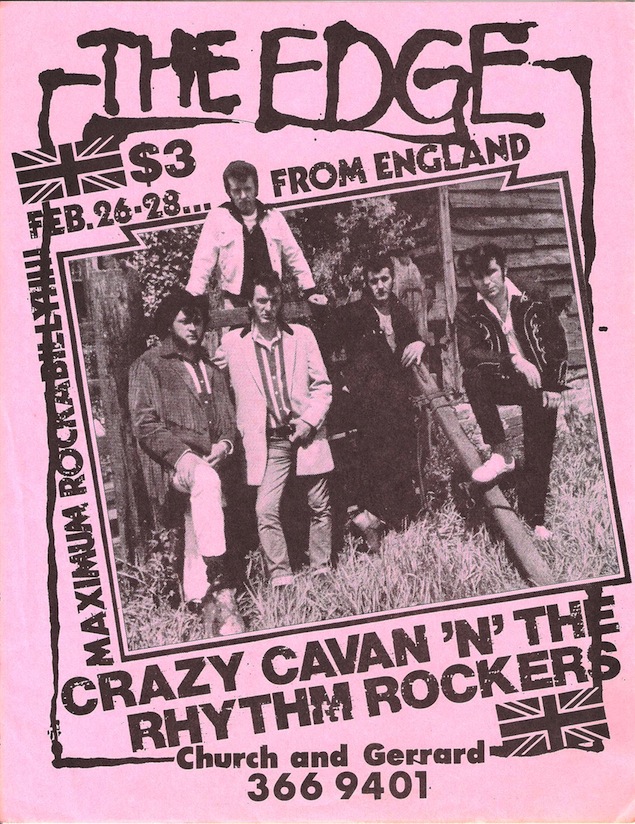
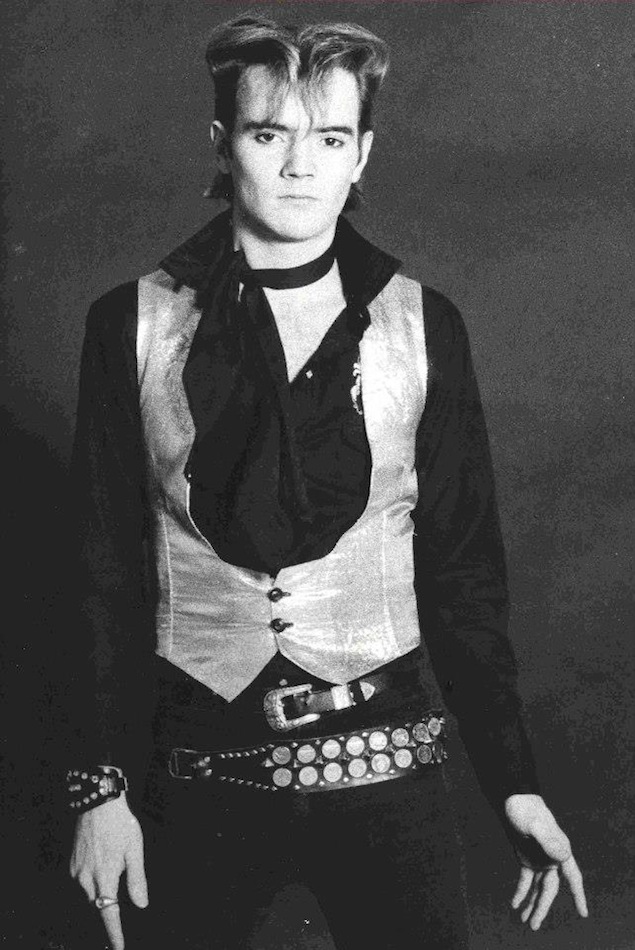
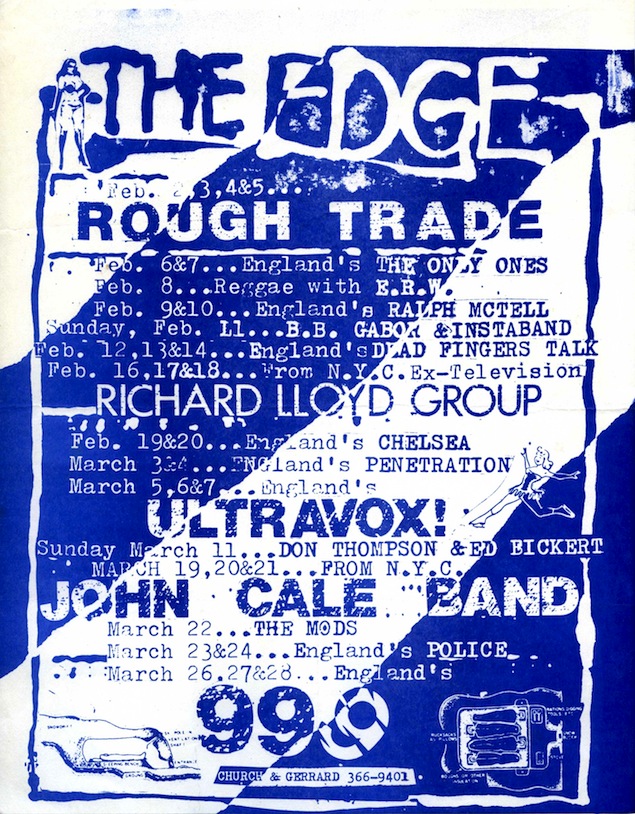
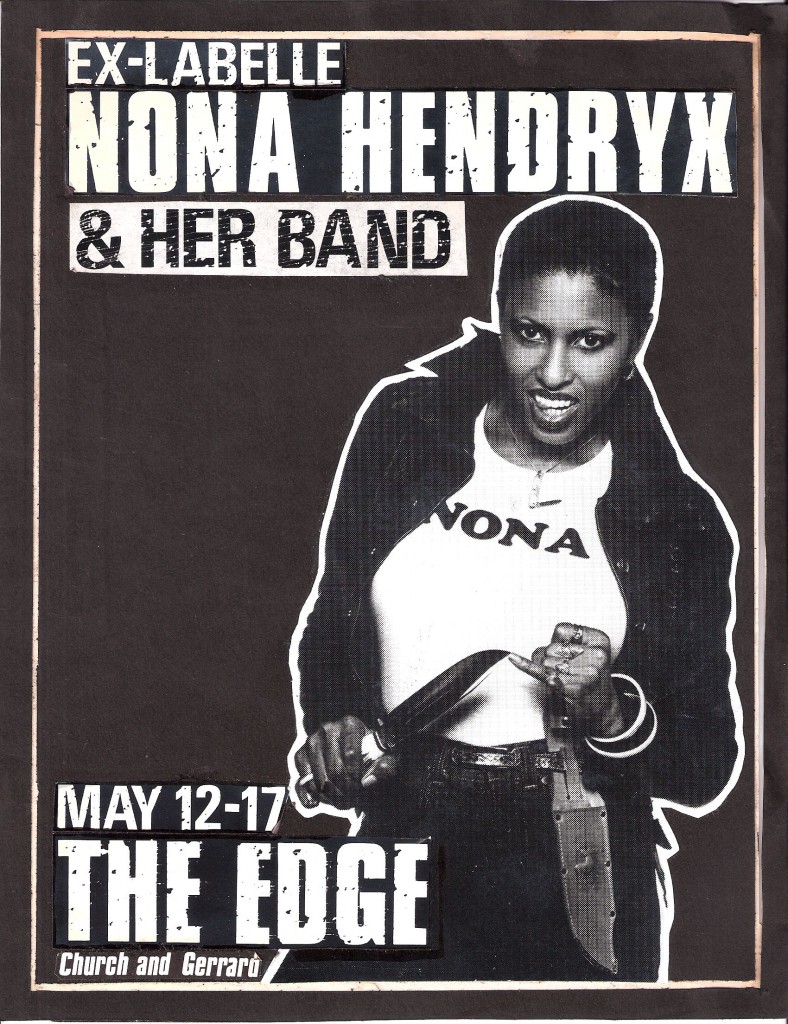
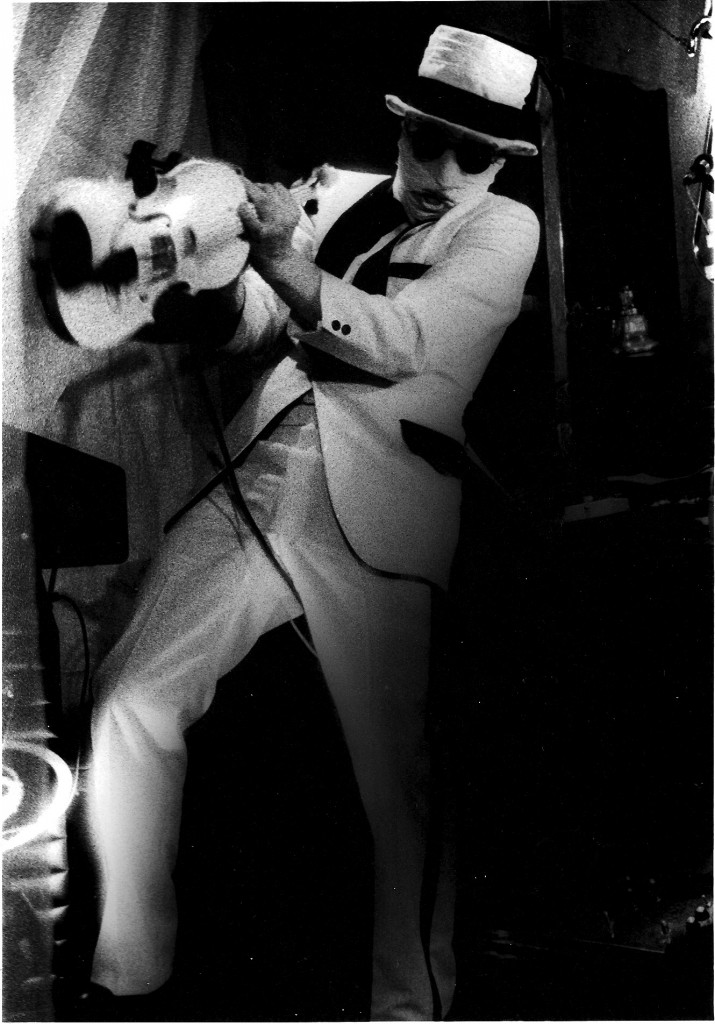
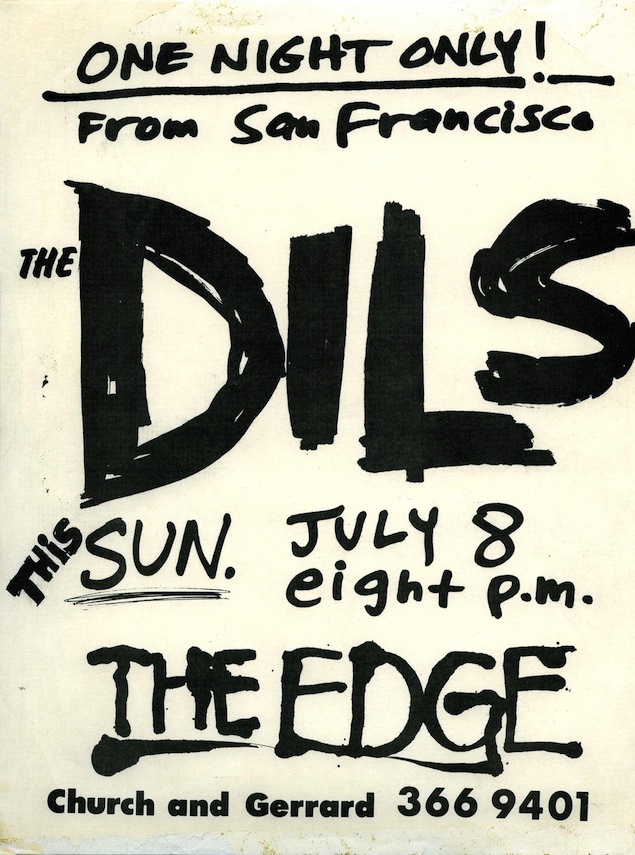
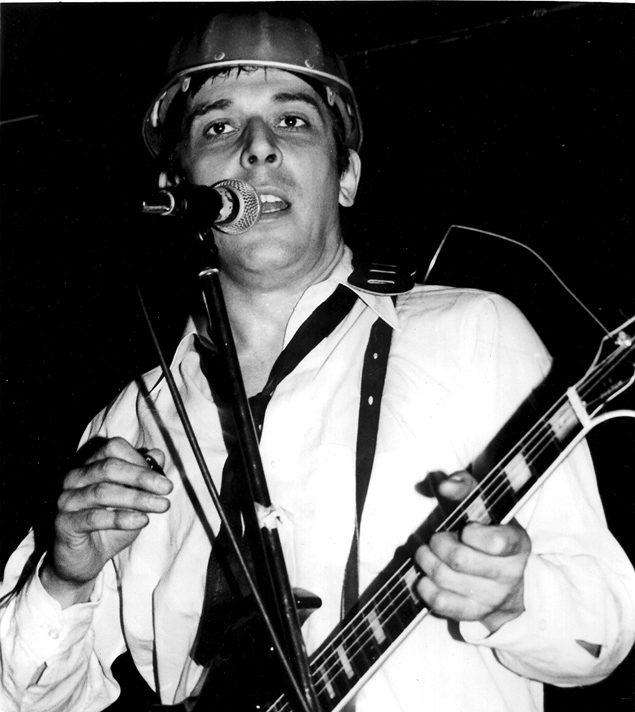
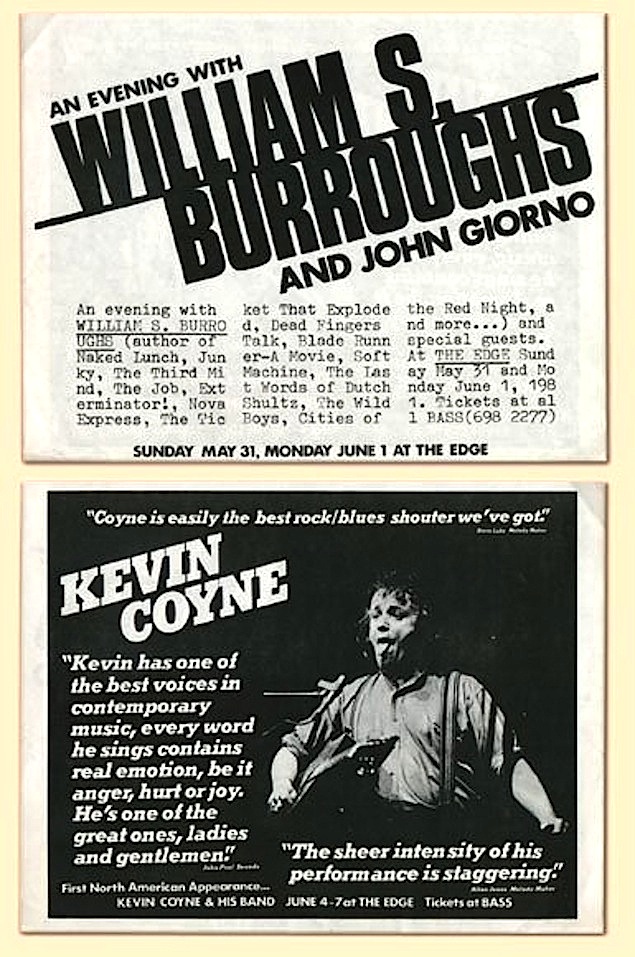
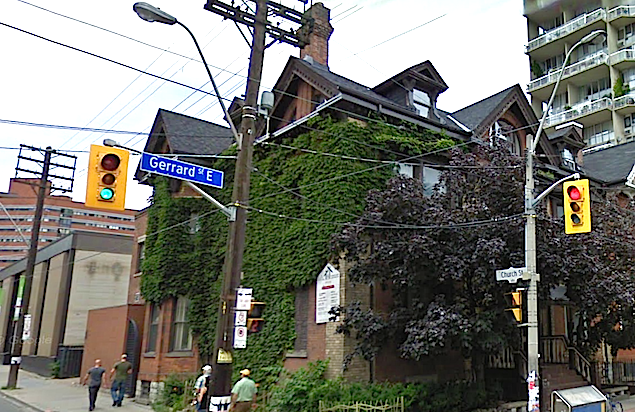
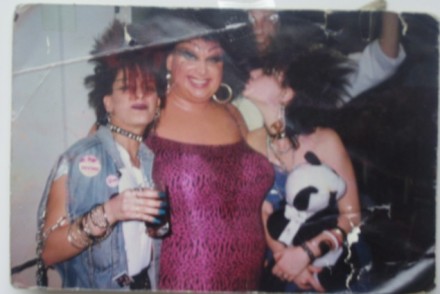
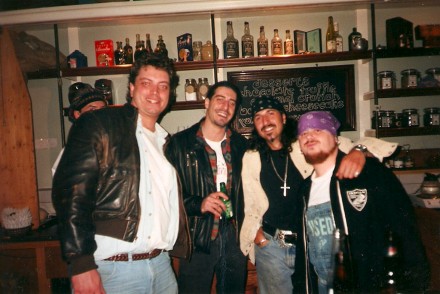
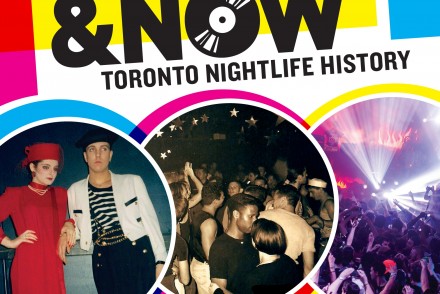

28 Comments
Hi say Hi th Gary Cormier if you see him
thanks
I saw Magazine at the edge touring their second album. John McGeoch was amazing, and I feel fortunate to have seen him onstage. My wife will never forget that night: Howard Devoto stumbled when coming offstage on his way back to the dressing room and accidentally hit her on the head with a beer bottle.
All I experienced in 1979 was drug exchange was with my ex and his hippie friend did not feel safe was never offered a menu
Me and the wife were supposed be there when the Police played at The Edge, but something went wrong and we didnt make it.
Sat with Michael Ironside before he went to Hollywood and his actor studio friend there one summer night (1970?) on the patio. I was going to George Brown for Commercials Arts and had a mandolin with me (just in case he reads this). The punk band that night were wearing Nazi Uniforms but we never went in to see them. Michael tried to get me to join his friends acting studio, in hindsight, I should have.
New Years Eve 1979 I had chartered a short bus myself & a dozen others rode 3 hrs. one way to see Jayne County & the Rock& Roll Resurrection what a CRAZEE night. The Edge was a great venue. I also have a copy of the record that was recorded that night
[…] out of high school in 1979 at the age of 16. Right around the same time, we hired him at The Edge (The Garys’ infamous Gerrard St. new-wave club from 1979-1981). Because he was too […]
What about the Zodiac I Night Club Disco at the Ramada Inn, Yorkland Boulevard, Don Mills? Mid 70′s it was the hottest place in town with music from disco’s in N.Y. live entertainment, big stars came to the club, Stevie Wonder, Pat Boone, Roger Moore, Frank Sinatra, and more. It also had a pulsating dance floor, DJ, lighting and sound technicians, live entertainment the last time Kenny Rogers and First Edition performed together, Swiss Movement and Louisanna Purchase, Carnival, Buddy Rich, Vibrations, Shirelles, The Miracles and more.
Hey Gordo, Wow the Zodiac 1!! I was the DJ/Soundman there around 1984 for a few years. At that time the place was less active then the 70′s. I kept hearing the history of the place in the 70′s and wished I Dj’d then. We still had bands and I loved working there. The setup was the coolest and with class. Meet a lot of great bands. All no names with great talent. Great memories.
Hey there Nick did you ever meet any of the old staff? I opened the club 1974 or 1975, original management, it was the disco craze at the time. When you went to the club you dressed up jackets etc. the women were incredible high fashion. long story but left and went south for about 8 months to teach as I am a PGA Golf Professional then and now. I came back to Canada and business had really dropped off as the management was poor and Ramada hired me to promote the place and get some of he old regulars back, manager could see the writing on the wall and quit and Ramada offered me the job with an insane amount of money at the time, well when I left in 1977 because of a lucrative position teaching golf in St. Catherines the hotel offered me more money because at the time on a Monday night we would put 250 patrons through the Zodiac which was unheard of, Wednesday 400 patrons, Friday 500 and Saturday the highest I obtained was 687 customers. we were the best, managers and owners from Katubia, Canary Cottage, Generator, Inn on the Park, Ports of Call and many other clubs would drop in wondering why we were so busy all the time, I had the best group of waitresses and bartenders, music from Club 54 that wasn’t even at other clubs(good relations with the record companies RCA, Quality, etc.), dance floor and you never new what celebrity might show up, it was the place to be seen. When did the Zodiac close as in the 80′s I was teaching golf out west?
I have to agree with gord, a name from the long lost parts of my mind. After the original booking agency’s contract was terminated, I became the entertainment director for the three zodiac-style clubs that ramada had opened, the Scorpio in London ON and a zodiac in Montreal. The plan had been to open 12 clubs across Canada named by the 12 zodiac signs. Sadly the disco and inconcert night club scene died after about two years, but during that period I had a budget of well over a million dollars annually to buy talent, hiring an assortment of disco’y type America. Recording artists like Shirley and Co. The miracles but with Bill and not smoky, Isis, and for a change Stan Getz , Canadians Gary and Dave , Swiss movement out of Detroit (?), and many others. The club was packed during the weekends with duded up party-goers who would stay for both concert sets and dance on the disco lighted floor before and a after the sets.
Each club had sound and lighting technicians as well a a DJ who all operated out of a central glassed in control room/studio. In addition to buying the entertainment I also trained the technical staff. All in all we had a great run until the international president came to the room one busy night and heard Get The Funk Out a my Face and said there would be no more cursing and vile music in his hotels. With his limited command of English he had mistaken funk for a similar sounding word and within a short time afterwards the clubs were shut down.
I remember the Zodiac, my ex liked it more than me.
In Arson as guitarist vocalist we played the Edge
Might have been night after or few days after the police
Also Andrea a dj friend brought two later to be famous fellows over to meet me on the patio one day before they played their first Toronto gig at Ryerson theatre met bono and edge on the patio
I believe we were all just youngsters
Arson guitarist and u2 guitarist and singer
We were not drinking!
Tones
That is definitely NOT Bob Mackowycz with Gary Slaight! Gary Topp is mistaken. And yes Slaight and Bob hung out but that’s not him.
I remember The Edge from my Ryerson days back in ’79-’81. I saw the Spoons play there a couple of times, as well as other artists. Some good times back then.
I have great memories of The Edge. I was under-aged for drinking (16-17) and living just up the street in a shared apartment, and one of my roommates introduced me to Drastic Measure’s music. The Edge always let me in without asking for ID. I saw DM there many times as well as other bands like Martha and the Muffins, and I think Rough Trade too, although I mostly remember seeing them elsewhere, like Larry’s Hideaway, which also usually let me in without asking for ID. The only time I couldn’t get into The Edge, was a Viletones night which was full, so we hung out for a while behind the building (parking spot?) to listen for a bit.
I remember hanging out at the edge, Larry’s, David’s, turning point and a crap load of other great clubs ( even buying coke off a one armed huggy bear from a stall in the parliament before one particular show ) . This night had wayne county at the edge and I ended up smashing the pack man machine cause I dropped a stubby bear on it accidentaly of course.
To that guys earlier post, Teenage Head and the Forgotten Rebels were allot bigger so they were always playing Larry’s hideaway just a 2 minute walk through the park away. I think it held about 400 but one night I was there when the Forgotten Rebels were playing and the cops and fire department cleared it out with 1100 kids in it. We were truly like a bunch of sardines inside. Amazing energy back in those early punk days.
Why is it back in the day that Hamilton produced the coolest punk bands and not Toronto? Must have been the dirty air.
hard to believe that Johnny and the G-Rays don’t even get a mention, we played their often and were favoured by the Gary’s who also booked us at the Horseshoe and other shows, including opening for Iggy Pop at the Roxy, oh well, also saw many great Brit acts there,Otway
and Daevid Allen and on and on, it was a great room, tho’ small, thanx for the memories
I agree – what the hell!
Hi Robert,
Sorry for not replying earlier. Just finishing up the book! You guys actually were mentioned by Gary Topp, and included in this sentence: “He namechecks more than a dozen Toronto acts of the time, including The Mods, Drastic Measures, The Sharks, The Curse, Spoons, Battered Wives, The Demics, The Dishes, Johnny and the G-Rays, Blue Peter, and The B-Girls.” Thanks for reading the story and taking the time to comment!
Canada’s original Rock Star, Jack Scott, performed at The Edge in 1979. His “The Way I Walk”, a minor hit for him in 1959, had recently been covered by both Robert Gordon and The Cramps and Jack was considered Rockabilly by many. Someone recorded one of his Edge shows and released it on Underground Records.
Can’t speak to how many times Steven Leckie was in the audience, but I saw The Viletones play there multiple times.
I used to make the buttons sold in the lobby for the Garys’ shows. I saw so many amazing and not so amazing bands there, even though I was often the oldest person in the room. Topper was always a delight – except when he was in a bad mood – and the security staff, especially Tank, looked rough and tough but were, in fact, pussy cats for the most part. Now I teach a History of Pop Music class at George Brown College and my students are astounded that I have seen the Ramones so often. My favourite memories include James Brown, Iggy Pop, Marianne Faithful – all at the Music Hall – Arthur Brown setting fire to the ceiling at Larry’s Hideaway, Nash the Slash performing a soundtrack to Un Chien Andalou at the Roxy, Suicide, the B-Girls and the B52s, and Toots and the Maytals at the Horseshoe. The List goes on and on. Toronto owes a lot to the Garys . . . oodles and oodles.
Tank? Did he work up at the domino? He was a real softy. A real big softy. Nice bloke.
All comments in the string below have been republished from their original appearance on The Grid website. We’re including the readers’ comments as they add to these Then & Now stories. We look forward to reading new comments here as well.
mark stafford
photo of the police is definitely Brian Master and was working with us at Q-107 at the time doing drive. Definitely Slaight though ….. nice specs. Say hi to Topp haven’t seen him in years. Macko did go to clubs…..been with him at many a spectacle back in those days! 8:37 pm on October 20, 2014
Anonymous
I worked at the Edge and Steven Leckie did not hang out there anywhere as much as he claims 8:00 pm on August 14, 2014
Anonymous
What about the big Canadian punk bands like Teenage Head or the Forgotten Rebels? Did they play here? 3:24 pm on December 14, 2013
Blair
I have the orginal sign that hung above the front door. Lived a couple of doors down at Neil Wycik at the time. 2:55 am on December 8, 2013
Bob K
I really miss The Edge but I suppose all good things must turn into rehab centres or somesuch. Saw many good shows there including multi John Cale and Jonathan Richman dates, Colin Newman and Alex Chilton. After Chilton’s set, we went up to say hello to him and the band to try and cheer them up as there were only about 20 of us in the room. He was touring with Like Flies On Sherbert at the time. They were very nice and appreciative of our geekdom. I have a vague memory that Blue Peter opened for Newman and as the audiences, ah, did not cross over, the band’s frontman spent much of the evening bantering with the hecklers. It was entertaining but pretty sad overall. Now I miss it all over again. 1:31 pm on June 24, 2013
Geoff McOuat
Re: Colin Newman: don’t think it was us. I was with Blue Peter until January ’81 and I definitely didn’t play with him. There were only five months after that until The Edge closed and Paul Humphrey, our lead singer, doesn’t remember playing with him either. Wish I was there, but it seems like someone else opened for him. 8:00 pm on October 6, 2013
Jason Varmazis
A great place. Snuck in underage to see Blue Peter perform here in 1981. What a show, what a scene. 1:00 pm on February 15, 2013
Jeremy
I was at the edge tons of times from early 1980 – first show I saw Telephone – right through to the end! Such great shows, like the Cramps, Bauhaus, X, Pere Ubu, Mink Deville… No other place like it! Check out some vintage shots of mine, some taken there, photos of the Cramps, Otway, Spedding… http://www.flickr.com/photos/jer1961/sets/72157623423178703/ Jeremy 10:23 pm on December 27, 2012
David C
I only went to The Edge once (stupid me), but what a night to choose. Ultravox’s first night with John Foxx on electrifying lead. The truly great part about that day was that my friend, Eddie Matthews, was at Fanshawe College doing Radio Arts. His assignment was to do a doc/interview on Ultravox. He interviewed Foxx the day of the gig towing me along to man the recorder and get good levels. Do I remember any of the questions? Na, but I remember how quiet and low key Foxx was. The concert blew my mind. If I was only going to go once, I sure picked the right night. My radio was NAILED to CFNY. When it too was relevant. 10:42 pm on November 29, 2012
Jonathan Gross
Hey, The guy in the photo with The Police and Slaight is not Macko but Brain Master then of CHUM-FM. Macko is a great rock intellect but rarely went to shows. I should know about that night – I introduced The Police on stage. Although the room had great alt cred, one of my favorite nights was the first appearance in town by The Knack, all Voxed up and completely unknown. Six months later they were the biggest band on the charts. Other highlights – Joanie Jett giving me promo records out of the trunk of her car, a small crowd for LA’s incredible X and Cormier telling me his “Paul is dead” conspiracy theories on the back patio. Heady times. Mr. Gross 12:26 pm on November 9, 2012
Denise Benson
Hi Jonathan, Thanks for your post. I checked with Gary Topp, who gave us that photo to include here and provided the names of the guys in the pic with The Police. Gary is 100% certain it is indeed Gary Slaight and Bob Mackowycz (not Brian Master). “It’s Macko. He and Slaight were always there together,” says Topp. A few other people I interviewed for the story, including Steven Leckie, also mentioned that Mackowycz was at The Edge quite a bit. Great to hear about Joan Jett playing there (I’m still a big fan). I did actually mention that Knack gig, with this quote: “They had all of these sponsored Marshall amps and they couldn’t get them to work—ridiculous,” chuckles Topp. Would have loved to have experienced The Edge myself! So many great people involved and bands who played. 3:22 pm on November 12, 2012
Ben
My father was one of the Gary’s, and It’s so utterly fascinating to read about his career… I mean, having grown up working coat-check for infamous shows I wouldn’t have been old enough to get into (like Ice-T and Body count) or seeing some of my favourite bands do shows in small venues (like Nirvana or Talking Heads)… I knew how very, very lucky I was… but I was never really old enough to appreciate how much it shaped this city. This is an amazing piece, thank you so much Denise Benson. I actually got all teary eyed with pride. I’ve been following this series since the first was published, and it was a delight to see one that hit even closer to home than the others… and have it be the best yet. 2:59 pm on November 5, 2012
Zed
Amazing research as always Denise! 11:55 pm on November 4, 2012
therealneo
Back in the day. I remember seeing quite a few good bands at the Edge, the Buzzcocks being one and having numerous cold ones in the backyard patio. CFNY, the 2 Gary’s, & Steve Leckie. Those were the days, thanks! 3:55 pm on November 3, 2012
1 who saw it from the beginning
Is this Steve Leckie writing this, or a friend for he wasn’t at the Edge anywhere as often as is claimed here. Its similar to all the people who now, today claim to have been at the first Police gig. Hundreds claim to have been but there were never hundreds at that show. I think Steve Leckie was/is good at self promotion. Even today. Why? No one under 50 knows who he is or much about what he did as much of it has been romanticized into someone he wasn’t. 8:16 pm on August 14, 2014
David B.
I was an underage teenager growing up in the doldrums of Aurora in the 1970′s. The Edge entered my consciousness via CFNY, who daily would hype shows at the club. As the kid with a car (Honda Civic ’75 custom painted black), there was many an occasion when I talked my friends into making the trip down to TO to see a show. As someone from beyond the burbs, just the chance to hang around the club (there were a couple of occasions when one of us got asked for ID…) would still make the trip worthwhile. For me, the Edge was it, the other clubs of the time were invisible. Probably a different story if you grew up in the city. I saw quite a few shows there, some of my favorites including Ultravox (they didn’t go on until very late and my friends were panicking about getting home), Archie Shepp (the first “serious” jazz artist I’d seen, and he was very serious), and NYC’s The Fast (not so much for their show, which was good I recall, but not nearly memorable as the two “punk” girls in the men’s washroom timing and measuring visits…). Rough Trade stands out too – I think Greg Godovitz sang a duet that night but I not 100% certain? The closing of the club was a sad moment for me as it occurred within days of my being accepted into Ryerson’s radio & television program (my plan was to work at CFNY). Although maybe it was a good thing as I might have ended up spending way too much time there. Thanks for the great piece, db. db 11:20 pm on November 2, 2012
Terry Wilkins
Greg Godovitz wishes he sang a duet with Carole….. that never happened. I know because I was 2 ft from Carole playing the bass. 5:50 pm on December 2, 2013
James
One of the tops in the series for me. For a kid growing up in 1980 Barrie Ont. the Edge club was a Mecca that I would save all my money to visit, travelling on the GreyCoach Bus to Toronto. They would stamp/admit underage kids back then, and I remember having my teenage brain totally blown by Nina Hagen. Never recovered. 10:25 pm on November 2, 2012
Marva
Hi Denise, once again, a fab article.. well written and brought back some great memories. Keep up the great storytelling! 5:23 pm on November 2, 2012
Randy Smith
I was reading the article and thinking “Who the Hell was it that I saw there? Just then, you mentioned him, er her – Wayne/Jayne County (and I believe her band at that time was the Electric Chairs). Loud, insane, offbeat, great fun! I remember other nights there, but not the bands. Could it have been all the cheap beer? That was a godsend to a kid making $6 an hour. We need places that take chances. Music needs to take chances. Are there any left? 4:15 pm on November 2, 2012
the segarini band played there five times in ’79 alone including an opening spot for the ugly ducklings….unlike for the police date, the place was always jammed to the rafters and you could chance on anyone in the crowd including debbie harry and everyone from the rock media….. great club….we played it a lot.
Hi
I’ve been working on my Orchestral Manoeuvres in the Dark/OMD website and found your page when searching for missing information. What a great read! I would have loved to have seen some of the shows you mention…
Are you able to help with confirming the date that OMD played? March 1981 I believe that is all I can find. Any help appreciated!
Keep up the good work
Mark
Was underage could never get in not like I was there all the time but my memory was that generation x played there and my friends band the fits played those were the days (still bored of education)